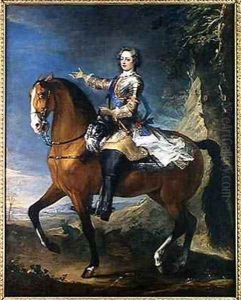Van Loo, J. B. Parrocel, C. & Paintings
Jean-Baptiste van Loo was a prominent French painter of the early 18th century, celebrated for his portraits and historical compositions. Born on January 14, 1684, in Aix-en-Provence, France, into a family of artists, Van Loo's early training was under the guidance of his father, Louis-Abraham van Loo, which set the foundation for his artistic journey. The Van Loo family, including his brothers who were also painters, contributed significantly to the European art scene, spanning France, Holland, and Italy.
Van Loo's career flourished when he moved to Paris, where his talent in portraiture especially gained recognition. His ability to capture the elegance and sophistication of the French nobility and intellectuals of the time won him numerous commissions. In 1719, Van Loo won the Prix de Rome, which afforded him the opportunity to study in Rome, an experience that greatly influenced his style and technique. His work during this period was marked by a harmonious blend of the French and Italianate styles, evident in his adept use of color and composition.
After his return to France, Jean-Baptiste van Loo's reputation continued to grow. He was admitted to the Royal Academy of Painting and Sculpture in 1720, and his paintings were sought after by the highest echelons of society, including members of the royal family. Van Loo's historical and mythological scenes were also highly praised, showcasing his versatility as an artist. Among his notable works are portraits of Louis XV and the Turkish ambassador to France, demonstrating his mastery in portraying a wide range of subjects with depth and sensitivity.
Jean-Baptiste van Loo's influence extended beyond France. He spent a significant period in England, where he painted portraits of the British aristocracy, further solidifying his international reputation. Van Loo passed away on December 19, 1745, in Aix-en-Provence. His legacy continued through his sons and students, who carried on his artistic tradition. Van Loo's body of work remains significant in the study of 18th-century European art, reflecting the cultural and social dynamics of his time.
